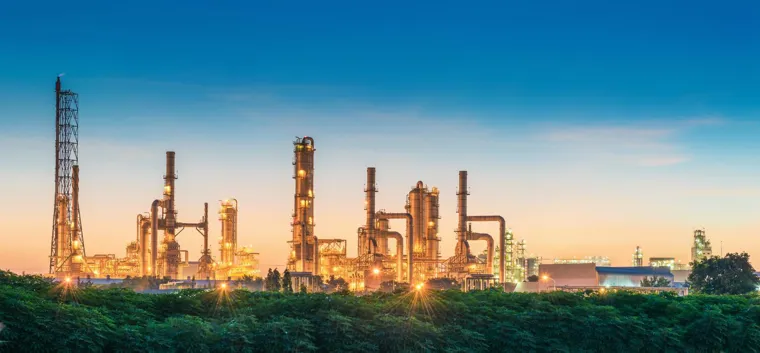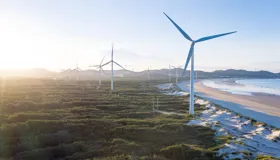Australia’s clean fuel moment: why we must act now or be left behind

The following column, by CEFC Executive Director Rupert Maloney, was published in The Australian newspaper on 16 July 2025. Read more about the CEFC report, Refined Ambitions – how Australian can become a low carbon liquid fuel powerhouse.
16 July 2025
Australia’s clean fuel moment: why we must act now or be left behind
Australia has made huge strides to decarbonise: record rooftop solar, a booming battery sector, and growing electrification of cars and homes. Yet one major frontier remains: the engine room of our economy still runs on liquid fuels.
These industries include aviation, mining, heavy freight, shipping, and defence - all sectors where electrification is unlikely, impractical, or uneconomic. This challenge is amplified in Australia, where our economy is uniquely shaped by vast distances, remote operations, and long-haul transport. From cross-country freight to regional aviation and mining in isolated areas, our reliance on high energy-density fuels is driven by geography and the practical limitations of renewable generation, transmission, and distribution infrastructure across such a dispersed landscape. As a result, we remain heavily reliant on imported, high emission fossil fuels.
Another option exists. Low carbon liquid fuels, or clean fuels, are renewable energy sources drawn from biogenic feedstocks like canola, sugarcane and animal fats, or from captured carbon and clean hydrogen. These fuels are known as ‘drop in fuels’ and are compatible with existing infrastructure and can drive high levels of carbon abatement.
With a vast potential to grow the feedstocks for clean liquid fuels, Australia must choose to invest now in a sovereign clean fuels industry and build a platform for long-term economic, environmental, and strategic advantage.
In 2023 alone, Australia spent more than $50 billion importing liquid fuels. We depend on imports for about 80 per cent of our liquid fuel needs, which exposes us to global price volatility and supply chain shocks. These vulnerabilities have been laid bare in recent years by a shifting geopolitical landscape. As nations de-risk their economies in an era of deglobalisation and energy nationalism. Germany, for example, was forced to transition from receiving over 50 per cent of its gas from Russia to virtually none within a single season. Even under the most aggressive electrification scenarios, modelling indicates we will still need 30 billion litres of liquid fuel by 2050.
A new report commissioned by the CEFC and produced by Deloitte - Refined Ambitions: Exploring Australia’s Low Carbon Liquid Fuel Potential - outlines both the urgency and the opportunity. It presents a blueprint for how Australia could unlock a $36 billion domestic industry in low carbon liquid fuels (LCLFs), avoid 230 million tonnes of CO₂ emissions, and create thousands of new jobs, particularly in regional areas.
As the report makes clear, we are rich in feedstocks but lacking in refining capacity for clean fuels. We hold a globally significant position in agricultural and waste inputs like canola, tallow, and sugarcane, yet we export these resources and purchase refined fuels at a premium. Meanwhile, advanced fuel technologies utilising these feedstocks are advancing worldwide. However, without a clear national policy framework, investors will keep seeking opportunities elsewhere.
This isn’t about lobbying for subsidies; it’s about aligning Australia’s strategic interests with its economic and environmental goals. The CEFC report outlines a clear roadmap to unlock the industry.
First, we need clear demand signals. Mandates for sustainable aviation fuel, clean freight fuel standards, and government procurement guarantees would give producers confidence to invest.
Second, concessional finance and revenue certainty mechanisms can mitigate risks in early-stage projects and attract institutional capital - something the CEFC has done successfully across a range of clean energy and infrastructure investments.
Third, we need to streamline the contracting, approval, and certification frameworks. Time is an enemy of innovation in capital intensive sectors. If a project takes five years to get off the ground, we lose our competitive edge.
And fourth, we must ensure accurate and transparent data on feedstock availability and emissions intensity to uphold integrity and build confidence throughout the supply chain.
Australia possesses abundant land, sunlight, and biomass resources. We boast world-class talent. Geographically, we are positioned near Asia’s growing aviation and shipping markets. Furthermore, our government has a clear ambition to establish sovereign clean energy capabilities under its Future Made in Australia strategy.
Countries like the U.S. are pouring billions into clean fuel infrastructure and support. Europe and key Asian markets are implementing binding mandates. If we don’t act, we risk being locked out. This is about more than climate targets. It’s about economic transformation. As coal-fired power stations retire, clean fuels provide a new lease of life for regional manufacturing hubs. They create skilled, future-focused jobs in construction, logistics, engineering, and biochemistry. They help us shift from dependency to resilience. And they give Australia a strategic advantage in an increasingly volatile world.
Just as we are now racing to build battery factories and critical minerals processing plants, we must apply the same urgency to clean fuels. The window of opportunity is narrow. However, with the right policy settings, Australia can lead not only in supplying the ingredients for a clean economy but also in refining, scaling, and exporting solutions.
The challenge is complex, but the choice is simple. We can be fuel takers or fuel makers. The future, quite literally, is ours to refine.
Rupert Maloney is an Executive Director at the Clean Energy Finance Corporation.




